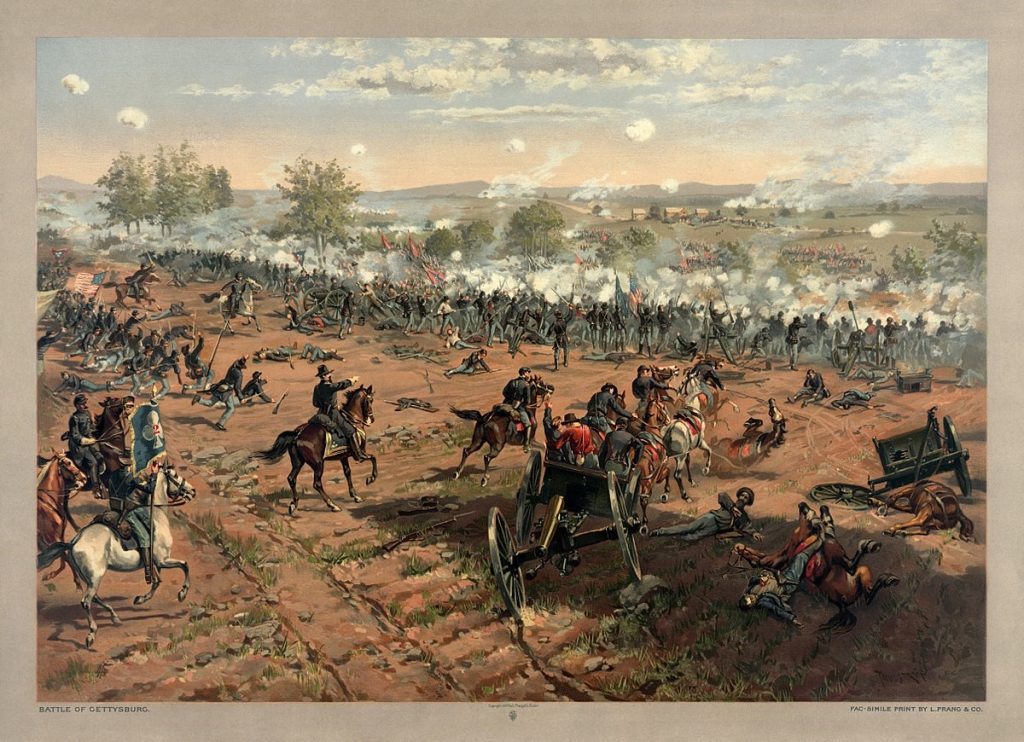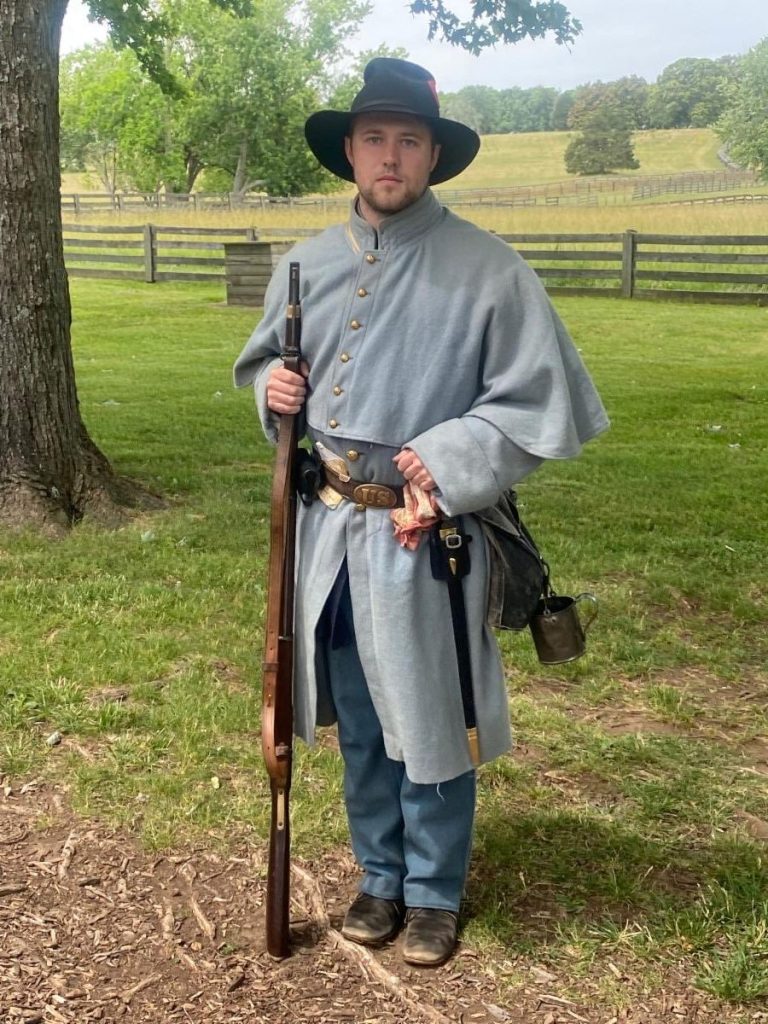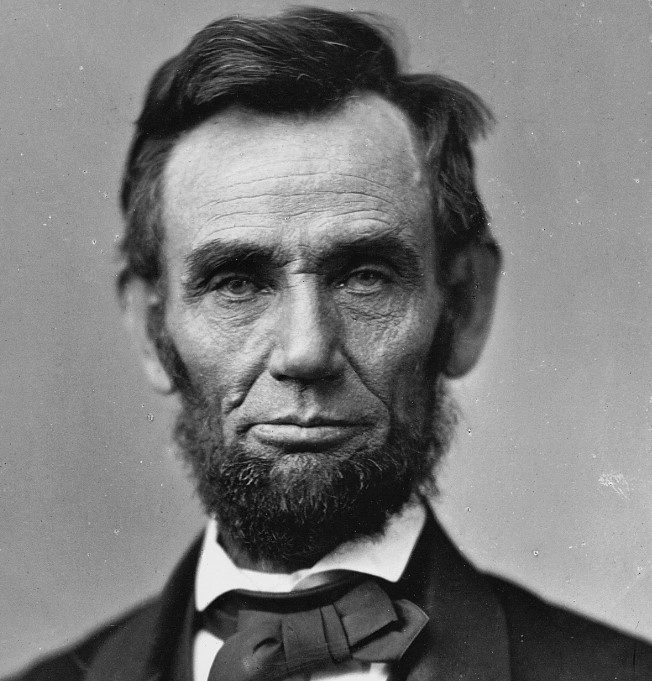We are quite literally surrounded by “memorials,” aids to help us remember. Whether they be photos, trophies, a particular article of clothing, wedding rings, etc. We keep things around us to help keep memories and commitments alive.
Memories and Commitments, History, the Present and the Future. A memorial can help us not only remember, but also reflect and project. How can I take that memory and project a better future for myself and others.
‘Those who cannot remember the past are condemned to repeat it’—-George Santayana from his work, Life of Reason, Reason in Common Sense 1905.
Gary here . . .
Even though there are parts of the past that we wouldn’t mind repeating, there are parts of the past that we never want to repeat.
My wife and I visited Appomattox Court House over the Memorial Day weekend.
In 1865 it was a sleepy little town of 150 souls in rural south-central Virginia. Nothing of note ever happened there, but that was about to change. During the previous four years starting in 1861, an estimated 750,000 soldiers had died in the Civil War (J. David Hacker, Civil War History, December 2011 issue). This number is about equal to the deaths suffered by Americans in all other wars combined. The family devastation would last for decades.

Two large armies were playing chess across the eastern United States. The Confederate Army of the South wanted to divide the country. The Union Army of the North wanted to keep the country united.
In March of 1865, the Union Army was bearing down on the Confederate capital of Richmond. Lee’s army fled west toward the Lynchburg train station to secure much needed food, leaving the city of Richmond in flames as he departed. His soldiers were about to starve.
As Providence would have it, Lee inadvertently marched into the end of the war.
Union Troops, including 5000 Freemen (former slaves and northern citizens) and an up-and-coming calvary unit led by Captain Custer (Remember Little Big Horn) were protecting the Lynchburg train station to the west. Another branch of the Union Army was moving north from conquests in the South. Grant’s main forces were chasing Lee west from Richmond. The only way for Lee to escape would have been north, but the James River, swollen by spring rains, was too wide and deep to cross.
Numerically overwhelmed, exhausted and out of food, Lee surrendered on April 9, 1865. The rest of Lee’s deployed units around the south surrendered within the month. The deadliest war in American history came to an end at a little crossroads in the village called Appomattox Court House.
While visiting the National Park, my wife and I sat on wooden benches in rapt awe as a young re-enactor shared how he had snuck away from his home in Chambersburg, PA at the age of 17. To avoid lying, he wrote the number “18” on a piece of paper and placed it under his shoe. Then he told the Union recruiting officer he “was over 18” so that he would be eligible to enlist in the infantry.
“Elijah Cummings” (a real civil war soldier) then described living in trenches in the rain and mud in 1864, marching day and night up to 35 miles at a time, and how he watched as his commanding officer died right beside him from a bayonet attack. He marveled at how the Lord had spared his life when thousands of others had died. In a hushed voice, he spoke about how his memories haunted him.

On a fateful morning in 1865, Elijah and his confederate foes stared at one another across the battlefield. Awaiting the outcome of the meeting between Lee and Grant at Appomattox Court House, both could not have been more amazed at the outcome. In his great wisdom, knowing that “a country divided against itself cannot stand,” President Lincoln instructed Grant not to take any prisoners or try anyone for war crimes or treason. All were to go home and “live peaceably.” Confederate soldiers turned in their weapons and were provided food and train transportation home.
President Lincoln freed the slaves with the Emancipation Proclamation on January 1, 1863 and by the end of the war, Union soldiers had freed 3.5 million slaves at a cost of approximately 350,000 Union lives. Approximately 10 slaves were freed for every union soldier who died. That part of the “division” between Americans had already been addressed prior to 1865. Lincoln had also signed reconstruction legislation so that the south could rebuild and the now “unified nation” could heal.

The recounting by “Elijah” of his almost daily near-death experiences struck a chord deep in our souls. His presentation was powerful, and worthy of our visit.
But what I want to focus on is how that moment and that memorial impacted history. For the next 150 years different people and organizations have based decisions and actions on what happened there. It played a role in adopting the 13th Amendment to the Constitution and the Civil Rights Act. It was part of Martin Luther King’s “I Have a Dream” inspiration. A lot of positive change came out of the horror and devastation of the Civil War.

So, a memorial is not just a dusty relic of the past. It doesn’t have to even be about wars. It can be something that happened in our lives, for good or bad. We can use it as inspiration to take action, to forge something better for the future.
Creating Positive Memorials
Memorials can be just for our families. We can use our lives to teach or positively impact our children, our grandchildren, our neighbors, our community, our employees and our business associates.
We live out an example of our own lives in the world every day. How we speak, our values and how we practice them, how we treat others both inside and outside of our homes, it all leaves an impact. Family “memorials” might be special vacations or holidays or sporting events – anything that leaves a permanent marker in our lives, events that commemorate, events that leave a lasting impression, events that unite and bring us closer together.
Successful companies seek out ways to create “good feelings” within their organizations. These “memorials” can be as simple as a cookout for lunch one day, or letting the employees leave a couple hours early before a holiday. It can be a day off for an employee’s birthday, a special card or gift celebrating the anniversary of affiliation, or perhaps a special bonus for introducing a new employee to the company. Spouses or family can be included at company Christmas parties, summer picnics, or a trip to a local amusement park.

I know a company that actually closes for a couple of days. Every family goes to an area theme park for two days, all expenses paid, including hotel. Employees talk about it in anticipation for weeks before it happens and weeks after they return. Perhaps even more importantly, spouses and children are talking about it. There is a tremendous amount of good will generated toward the company because this annual “memorial” is truly appreciated by the employees and their families. Plus, the company is creating an environment and an opportunity for individual family units to come closer together.
Be creative. Create some great memories for the people in your sphere of influence.
Peace and blessings to you,
Gary and the entire Green Pro Team

